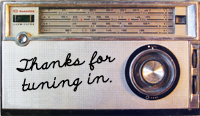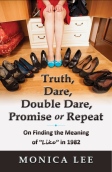I found a lump in my breast.
Now before this statement causes you to wail and gnash your teeth because you’re a faithful reader who would miss my blog if I no longer posted weird recipes and old diary entries, I’m OK. If you’re a mute lurker who’s gleefully rubbing his hands together ready to take in all the details of my imminent demise, you’re going to be disappointed.
This post is about breast lumps, health insurance and the price of peace of mind.
Two weeks ago during a shower, I noticed a bump on my breast. I wasn’t willing to call it a lump because a breast lump is WAYYYYYY too scary to ponder.
The bump appeared suddenly, my breast was sore, the area around the bump was red and the bump was not under my arm. For the record, I’m 45, and I don’t have a history of breast cancer in my family.
A thorough review of Google revealed this bump had almost no chance of being cancerous. But still, it was a bump. In my breast. And every woman who’s ever seen, worn or touted a pink ribbon knows that’s no laughing matter.
So I made an appointment for an annual exam, which was about 14 months overdue anyway (I’m generally pretty healthy and occasionally pretty lazy — I could use a haircut, too, but I haven’t scheduled that either). Since I was traveling last week, the appointment didn’t occur until Monday, 16 days after I found the bump.
Over the course of those two weeks, the bump got progressively smaller and painless. Another indication that whatever was in there, it wasn’t cancerous.
I arrived at my doctor’s appointment Monday morning, and as the nurse was assessing my health, the conversation took on a distinctly ominous tone when I mentioned I found a lump (yes, I said “lump”) in my breast.
I’ve never had such a fast pap smear in all my life. She was getting the unimportant stuff out of the way so she could concentrate on this Lump. The Lump had now taken on the sort of importance that brings capitalization along with it.
She felt around and announced she knew as much about my Lump as I did from my Google search: “Well, there’s a Lump there — it could be a cyst, but we both felt it — so you’ll need a mammogram and maybe an ultrasound before we can determine what it is. Then, if necessary, we’ll get a biopsy. Only a biopsy can determine if it’s something more serious than a cyst.”
Yikes.
She had all the information I did: That every indication pointed to something other than cancer. But she was talking about “biopsies” and “something serious.”
She sent me off with a prescription for a “diagnostic” mammogram (as opposed to a “screening”) and an ultrasound.
I called the hospital and as soon as I described to the scheduler what I needed, she announced she had an opening available the next morning.
So on Tuesday, I arrived bright and early at Sherman Hospital and handed my paperwork to the receptionist.
I don’t know if it was because my prescription said “breast lump, left” or because they’re nice to all their patients, but every single person I encountered at the hospital was friendly, kind and helpful. They showed me where to wait and how long I might have to wait. The mammogram technician told me they would make a determination about my lump that day so I would know whether or not I would need a biopsy before I left.
If I really had breast cancer, I certainly couldn’t have complained about the service.
I’ve had two mammograms in the past, so I knew what to expect. Except in addition to the stickers to mark my nipples (just in case it isn’t clear?), they added a sticker to mark the spot of the Lump, which by now, 16 days after its first appearance, I could hardly feel anymore.
Price: Roughly $277. Or, at least, that’s what a screening mammogram costs. Plus the price of reading it. And a “diagnostic” mammogram might cost more. That’s what I was told, but costs came up only because I brought them up. Why a diagnostic mammogram is coded different is beyond me (do they let the interns read the “screening” mammograms?), but it’s bad news for me because I have high-deductible health insurance that covers annual exams and screenings for free, but I’ve got to pay for everything else up to $3,000.
Now $3,000 would be pretty cheap if this Lump turned out to be breast cancer, but it’s a pretty big hurdle to clear when you’ve a struggling author who’s got to pay for it yourself.
Afterwards, the technician brought me back into the mammography room and told me firstly, to remove the stickers from my breasts. Then she said the mammogram wasn’t showing anything and in any case, it didn’t appear to be a solid mass (read: “solid mass,” as opposed to a fluid-filled cyst, is very bad news). The radiologist who read the mammogram suggested we go ahead with the ultrasound “just to be sure.”
At that point, sitting there without a bra in a cotton wrap being handled so delicately by every medical health professional within ear shot of my “breast lump, left” prescription, I just wanted to be sure, too.
Logically, I knew this bump was not a Lump. It was getting smaller and the mammography revealed nothing ominous. And I knew I would have to pay for the ultrasound because it wasn’t a screening procedure so I was on the hook for it, only to have it applied to my deductible. An ultrasound cost $517.60 plus the price of reading it (presumably by someone other than an intern).
But emotionally, all I could think about was my nephew, who was brought into a hospital 10 years ago with a suspicious sore on his arm. Looks like nothing. Probably is nothing. Little boys get hurt sometimes. The odds of it being something serious are slim and none.
But he was diagnosed with leukemia that day and ended up undergoing six months of intense chemotherapy and hospitalization.
He lived (lives!) but nearly every other child I saw on that hospital floor during my nephew’s hospitalization didn’t make it.
So I followed along dutifully as the mammogram technician handed me off to the ultrasound specialist.
After a huge smear of warm jelly (even the jelly was warm! but on the other hand, for $517.60, it better be!) and less than three minutes of undergoing the ultrasound wand, it was over.
Five minutes later, the ultrasound tech returned to tell me it was nothing. Not a solid mass and not even a fluid-filled cyst.
The Lump that now was barely even a bump was nothing.
Ah. Peace of mind.
End of story, right?
Emotionally, sure. She lived happily ever after. The end.
But logically, it’s not the end.
Despite three procedures (manual exam, mammography, ultrasound), no one knows what the bump is (or was) and why it happened.
Could be hormones. Could be trauma. Could be too much caffeine. Could be a cyst that exists in my breast all the time that decided to be unruly and get inflamed.
My health insurance company (which will presumably cover the doctor’s exam) and I spent $1,000 or more to learn exactly as much as I knew after 30 minutes with Google.
So the Big Question (yes, important enough to be capitalized) is: Is peace of mind worth $1,000?
If I had standard health insurance, I would be paying 20% and the health insurance company paying 80%. For $200, I positively would have undergone the ultrasound. Which is a terrible thing to admit because it costs $1,000 either way.
With my deductible, I’m paying for at least $517 of it. If peace of mind is worth $200 to me, is it worth $517+?
Well, the answer is yes. I knew how much it was going to cost, and I went ahead with the procedure. In retrospect, I should have waited a week before determining to go ahead with the ultrasound. My gut was telling me it was nothing, and I wasn’t losing sleep over it. In a week, the bump would have been gone altogether.
But I didn’t wait.
This is a huge issue with why health insurance costs so much. Not a single one of the health insurance professionals I encountered recommended a “wait and see” approach. Even if it had occurred to them, they probably would not have said it because the last thing they’d want is to be sued by the estate of the struggling author who had breast cancer but was told to “wait and see” and ended up dying an untimely death.
So here we are: Paying high prices — either directly or indirectly — for well-trained professionals with very expensive machines (and stickers and warm jelly) to perform procedures “just to be sure” that, frankly, still leave a lot of unanswered questions both about breast bumps and about the cost of peace of mind.







Well-said.
So glad all your parts are working properly, Thank God for YOU! 🙂
You were prudent and paid the price…worrying causes lots of other problems! I say you did the right thing, and I’m very glad you’re alright!!
I have good insurance for preventative procedures for our family, & we go to doctors, when needed! But, I don’t have insurance for my precious dog, but I take her to the vet, too! It’s the price we pay for having her happy & healthy!
Praise God!
So glad it was okay. Wouldn’t it have been way moer expensive later for the insurance company to cover treatment of the lump if indeed it had been cancerous? I’m not sure you can put a $ amount of peace of mind. Now, instead of worry aboot the lump, you are worry about paying for the test. A good trade-off, I think.
And, you got your annual exam out of the way too. Check that off your list!